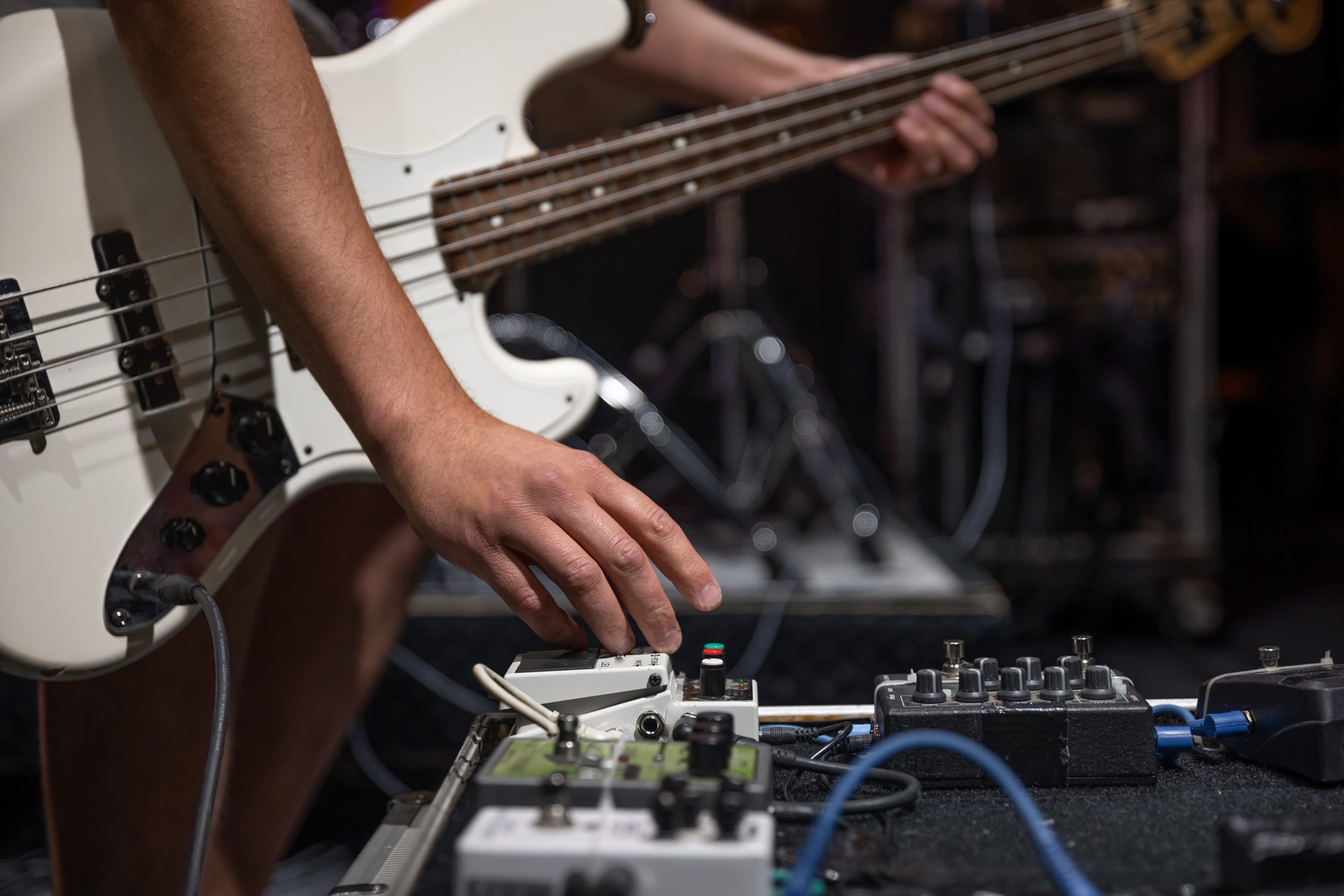There are so many effect pedals on the market today. It can be a challenge to even decide which sonic road to go down. Bit crushers, loopers, and pitch-shifters have all made their way onto my pedal board, on occasion, but here are my top 5 essential effects I rarely leave home without.
1. OVERDRIVE PEDAL
For me, overdrive tops the list as the most essential effect. I wish turning a Fender tweed deluxe up to near 10 was always an option. However, they’re not always available and clubs and bandmates might strongly object. Fortunately, there are plenty of great overdrive pedals out there today.
Let me clarify a common misconception; overdrive and distortion are not the same thing. Overdrive will either provide a gain boost to the tubes in order to create clipping in the sound wave or mimic that effect. It allows you to get an overdriven sound without turning your amp up all the way. However, in my experience, they usually are a bit more effective if the amp is already turned up a bit. Then all the pedal has to do is just help push it over the edge.
Overdrive will react to how hard you strike your strings, clipping less if you’re not hitting hard. And it will, for the most part, retain the timbre of your original tone.
Distortion, on the other hand, alters the shape of the sound wave in specific patters. It will color your timbre and the amount of distortion will not change depending on how hard or soft you strike the strings. In general, I tend to prefer overdrive to distortion.
I love the sound of a nice tube amp turned all the way up and I reach for that sound as often as possible. I also like being able to play with the amount of grit by how loud the amp is, in addition to the overdrive pedal, as well as how hard or soft I’m hitting the strings.
2. FUZZ PEDAL
As far as distorting your signal goes, fuzz is the total opposite end of the spectrum from overdrive. Whereas distortion alters the shape of the sound wave, fuzz obliterates it and turns it into a square wave. And it is beautiful.
In my experience it changes almost every quality of your original timbre. Some fuzz pedals will react in unpredictable ways, drastically changing your tone and even producing unintended pitches. I feel they often sound like your speaker has been ripped, or sliced open.
If used at the wrong moment, they can be the worst possible thing you’ve ever heard. But at the right moment… square wave bliss!
Some of the most popular uses of fuzz that I’ve, on occasion, tried to emulate are Jimi Hendrix and Billy Corgan.
3. DELAY
Delay was one of the first effects I ever got my hands on and has been a staple ever since. Part of what I love about delay is how versatile of an effect it can be. It can help create beautiful, cascading single note lines, modulated synth-like chords, precise complex sounding rhythmic phrases, swirling, almost eerie, wall of sound.
It’s also massively different depending on whether it’s tape delay, analog delay, or digital delay.
TAPE DELAY works by literally having a tape inside it that records what you play and immediately plays it back. One can adjust the speed of the delay which would result, in many machines, in the tape slowing down or speeding up to change how long it takes to play back what was played.
Tape delays have many moving parts and are quite imperfect. Many of these imperfections are what is so sought after with these early machines. Most tape delays have audio filters to help reduce noise which greatly color the tone. The tape often will not move consistently at the same rate producing a warbling chorus-y effect. These are just some of the happy accidents, if you will, of these machines.
I really have only had the pleasure of using tape delays in the recording studio. Although I absolutely love the sound, they are just too big and unreliable to take out on the road.
ANALOG DELAY, in my experience, offers some similar sound qualities of tape delays but with more accuracy and more durability in smaller and sturdier boxes. They work by using a bucket-brigade chip. With each repeat the sound gets a bit warmer and a bit more broken up.
What I love about analog delay is the warmth as well as the changing quality of tone with each repeat. Also, analog delays self-oscillate in a way that can produce a wall of sound effect which can be very effective in creating abstract sounds.
DIGITAL DELAY uses a digital signal processing chip to create its effect. The great thing about digital delay is its precision and delay times. Some can go up to 2600ms or more. And they can repeat forever without changing the tone of the repeats at all.
On my board I almost always have an analog delay feeding into a digital delay. That way I can get all the idiosyncrasies of a repeated analog delay and, if I want, use the digital delay to endlessly repeat those analog repeats.
4. VOLUME PEDAL
A volume pedal may not seem like an essential pedal and it’s certainly not the most exciting. However, I’ve been using one for years and it is definitely a part of my sound and is usually present on my board.
For me, there are two cool things you can do with volume pedals. First of all, if you put it after your overdrives/fuzz then, along with your volume knob on your guitar, you have 2 options; use your volume knob to reduce your volume as well as gain or use your volume pedal to keep the same level of gain but with reduced volume.
Second, if you have your volume pedal before your delays you can get long sustained chords with little or no attack, creating an almost synth-like sound. As with many pedals, it’s all about where it ends up in your signal chain.
5. REVERB PEDAL
Out of all the effects, reverb is the effect that most attempts to recreate a sound that occurs naturally. Reverb occurs when a sound reflects off various objects in a space. Those reflections mix together and decay in different ways producing a sort of airy sound with little resemblance to the initial sound.
There are many methods of creating or simulating reverb that has been used in the studio, in performance halls, and in effect pedals. Reverb effect pedals create reverb digitally. There are many types that will simulate spring reverb, hall reverb, and plate reverb, to name a few.
The great thing about quality reverb effect pedals is that one can simulate various types of reverb relatively convincingly, as well as produce wild sounds that would never occur naturally such as unlimited repeats, changing tonal qualities, and pre-delay.
*For more personal insight, check out Bob’s breakdown of his Pro Guitar Rig
5 ESSENTIAL GUITAR PEDALS BY BOB LANZETTI
Bob Lanzetti is a 3x Grammy Winning musician from the band Snarky Puppy. Bob studied jazz guitar at University of North Texas and has go on to become a successful writer, arranger, guitarist and educator. In addition to Snarky Puppy, Bob has worked with Tommy Sims, Jerry Granelli, Bokante, Cory Henry, Michelle Willis, Bilal, Banda Magda and many others. Bob uses Fodera Guitars, Supro Amps, D’Addario Strings, Pigtronix and MXR effects and Fralin Blues Special Pickups.


















